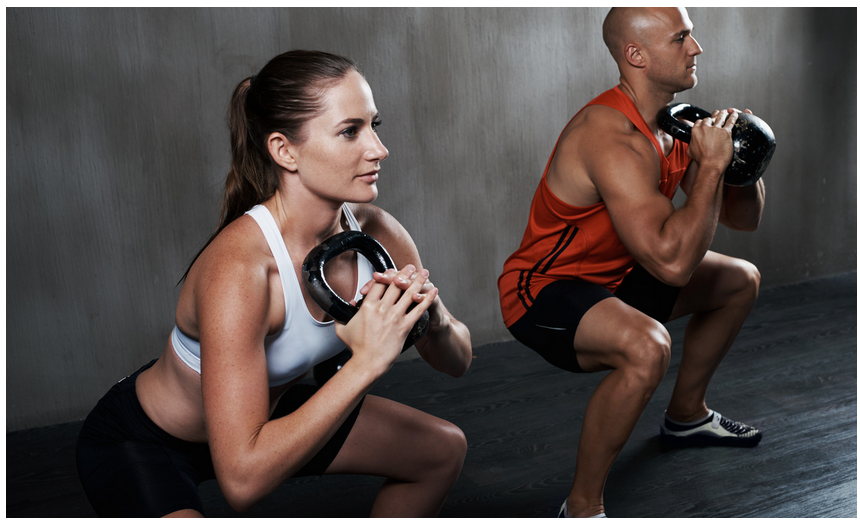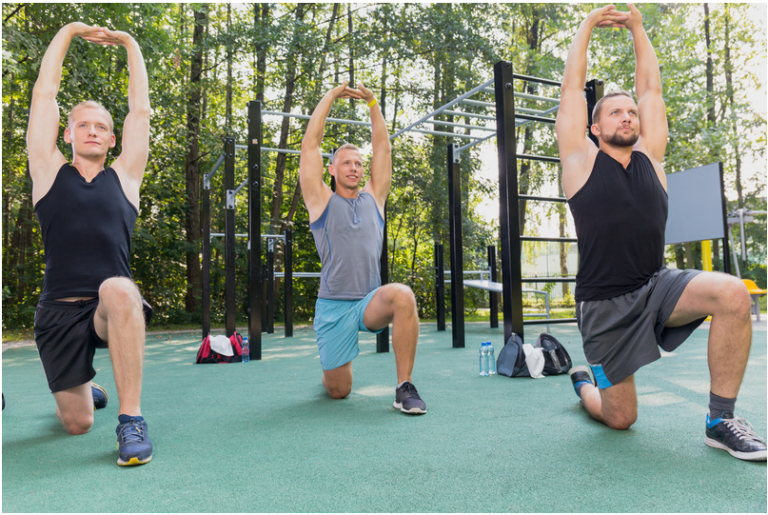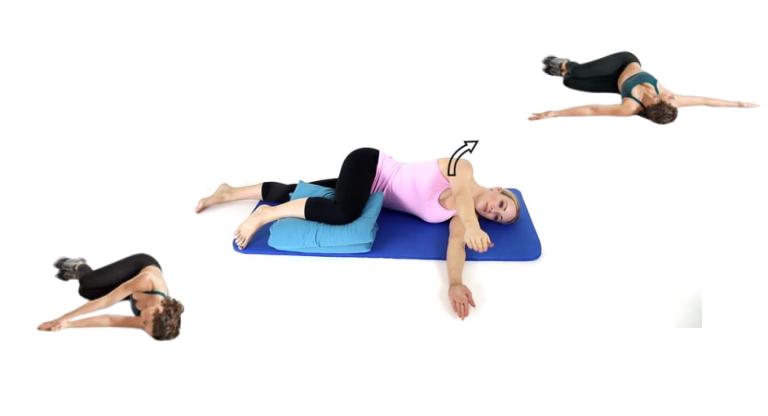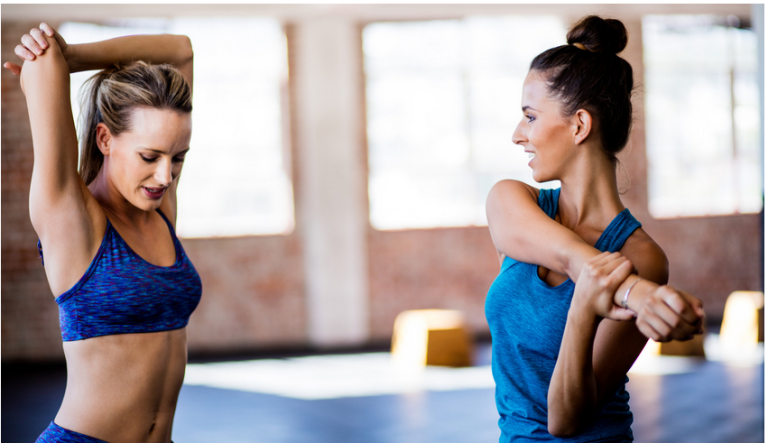
Stretching Exercises for Squats: To Improve Your Flexibility

Stretching is a crucial component of any workout routine, and when it comes to squats, it becomes even more vital. Squats are highly effective for building lower body strength but can pose a challenge.
Incorporating stretching exercises for squats is essential as it helps prepare your body, improves flexibility and range of motion, and prevents injuries. Dynamic stretching before workouts and static stretching after workouts can greatly enhance muscle preparation and recovery. Specific stretching techniques for squats target key muscles and optimize form.
It’s important to note that stretching exercises can be modified based on different fitness levels. When developing a routine, addressing common questions about stretching and squats is beneficial.

Explore the wide variety of stretching exercises that target different areas of the human body and improve your flexibility with this comprehensive guide. Begin with specific stretching exercises for squats and delve deeper into the realm of full-body flexibility. You will also like: Stretching Exercises for Shoulder Impingement Syndrome.
Key Takeaways
Benefits of Stretching for Squats

As someone who loves doing squats, I know how important it is to incorporate stretching exercises into my routine. Stretching before and after squats can help enhance my performance and prevent injuries. In this section, I will discuss the benefits of stretching for squats, including enhancing squat depth, improving squat mobility, and preventing injuries.
Enhancing Squat Depth
Stretching before squats can help enhance squat depth. I can achieve a deeper squat position when I stretch my hip flexors, hamstrings, and calves. This is because stretching increases my range of motion, allowing me to squat deeper without compromising my form. One of the best stretches for enhancing squat depth is the couch stretch. This stretch targets the hip flexors and can help improve hip extension, essential for achieving a deep squat position.
Improving Squat Mobility
Stretching can also help improve squat mobility. I can move more freely and easily when I stretch my muscles before squats. This is because stretching increases blood flow to the muscles, which can help reduce stiffness and soreness. One of the best stretches for improving squat mobility is the pigeon stretch. This stretch targets the glutes and hips, which are essential for squatting. By stretching these muscles, I can easily improve my squat mobility and perform squats.
Preventing Injuries
Stretching can also help prevent injuries during squats. When I stretch before squats, I can reduce the risk of muscle strains and tears. This is because stretching helps warm and prepare my muscles for the workout. The hamstring stretch is one of the best stretches for preventing injuries during squats. This stretch targets the hamstrings, which are prone to injury during squats. By stretching my hamstrings before squats, I can reduce the risk of injury and perform squats safely.
In conclusion, stretching before and after squats can provide numerous benefits, including enhancing squat depth, improving squat mobility, and preventing injuries. By incorporating stretching exercises into my routine, I can perform squats with ease and confidence.
Dynamic Stretching Routines

As I prepare for my squatting session, I always warm up with dynamic stretching routines to prepare my muscles for the intense workout. Dynamic stretching exercises are performed while moving, and they help to increase body temperature, blood flow, and range of motion. Here are a few dynamic stretching exercises that I find helpful:
Leg Swings
Leg swings are a great way to warm up the hips, hamstrings, and glutes. To perform this exercise:
Walking Lunges
Walking lunges are an excellent exercise for stretching the hip flexors, quads, and glutes. To perform this exercise:
Jump Squats
Jump squats are excellent for warming the legs and enhancing explosive power. To perform this exercise:
These dynamic stretching exercises are just a few that you can use to prepare for your squatting session. Remember to perform them in a controlled and deliberate manner to avoid injury. Incorporating dynamic stretching routines into your warm-up can enhance your performance and reduce the risk of injury.
Static Stretches for Post-Squat Recovery

After completing a squat workout, stretching out your muscles to help them recover and reduce the risk of injury is important. Static stretches are a great way to do this. Here are a few effective static stretches that you can do after your squat workout:
Butterfly Stretch
The butterfly stretch is a great stretch for your inner thighs and hips. To do this stretch:
Calf Stretch
The calf stretch is an important stretch after squats, as squats can strain your calves greatly. To do this stretch:
Hamstring Stretch
The hamstring stretch is a classic stretch that targets the back of your thighs. To do this stretch:
Remember, stretching is an important part of any workout routine, especially after squats. These static stretches will help your muscles recover and reduce the risk of injury. Incorporate them into your post-squat cool-down routine for best results.
Squat-Specific Stretching Techniques

As an avid weightlifter, I have found that incorporating specific stretching techniques into my routine has greatly improved my squat performance. In this section, I will share some of the most effective squat-specific stretching techniques I have used to improve my squat depth and mobility.
PNF Stretching for Squats
Proprioceptive Neuromuscular Facilitation (PNF) stretching is a technique that involves a combination of stretching and contracting muscles. This technique is particularly effective for improving squat depth and mobility. To perform PNF stretching for squats, follow these steps:
VMO Stretching Exercises
The Vastus Medialis Oblique (VMO) is a muscle on the inside of your thigh responsible for stabilizing your knee during squats. Strengthening and stretching this muscle can help improve your squat depth and reduce the risk of knee injuries. Here are some VMO stretching exercises you can try:
Gastrocnemius Stretch
The Gastrocnemius muscle is located in your calf and is responsible for the plantar flexion of your foot. Tightness in this muscle can limit your ankle mobility during squats, making it difficult to maintain proper form. Here’s a simple stretch you can do to target the Gastrocnemius muscle:
Incorporating these squat-specific stretching techniques into your routine can improve your squat depth and mobility, reduce the risk of injury, and ultimately lift more weight with proper form.
Incorporating Stretching into Squat Workouts

As someone who frequently incorporates squats into my workout routine, I know how important it is to properly warm up and cool down before and after a squat session. One of the best ways to prevent injury and improve mobility is to incorporate stretching exercises into your squat workouts.
Warm-Up Stretches
Before diving into squats, it’s important to warm up your muscles and joints to reduce the risk of injury. Warm-up stretches can also help improve your range of motion and flexibility.
Some great warm-up stretches to try include:
Cool-Down Stretches
After a squat workout, it’s important to cool down and stretch your muscles to prevent soreness and stiffness. Cool-down stretches can also help improve your flexibility and range of motion.
Some great cool-down stretches to try include:
Incorporating warm-up and cool-down stretches into your squat workouts can help improve mobility, reduce the risk of injury, and prevent soreness and stiffness. Taking a few extra minutes to stretch before and after your squats can help ensure that your body is ready for the challenge ahead.
Stretching Exercises for Different Levels

Suppose you’re new to lifting or just starting to incorporate squats into your workout routine. In that case, starting with some basic stretching exercises is important to prepare your body for the movement. Here are some stretching exercises for beginners:
Beginners’ Stretching Guide
For experienced lifters, more advanced stretching exercises can improve the range of motion and increase flexibility. Here are some advanced stretching exercises for experienced lifters:
Advanced Stretching for Experienced Lifters
Remember to always warm up before stretching and to listen to your body. If you experience pain or discomfort, stop the exercise and consult a fitness professional.
Common Questions about Stretching and Squats

Best Time to Stretch for Squatting
One of the most common questions people ask when it comes to stretching and squats is when is the best time to stretch for squatting. According to BarBend, the best time to stretch for squatting is during your warm-up routine. This helps increase blood flow to your muscles and prepare them for the workout.
It’s important to note that stretching after your workout is also beneficial. This helps to reduce muscle soreness and prevent injury. So, if you have time, it’s also a good idea to include a post-workout stretching routine.
Stretching vs. Strength Training Sequence
Another question people often ask is whether they should do their squats and weights before or after flexibility training. According to Nerd Fitness, doing your strength training first and then doing flexibility training afterward is best.
This is because strength training requires more energy and focus, and you want to ensure you have enough energy to complete your workout properly. Flexibility training, on the other hand, is less intense and can be done at a slower pace.
In summary, the best time to stretch for squatting is during your warm-up routine, and stretching after your workout is also beneficial. Doing your strength training first and then your flexibility training afterward is best. Following these guidelines can improve your squat mobility and reduce your risk of injury.
Frequently Asked Questions
What are the best dynamic stretches to improve squat mobility?
Dynamic stretches are a great way to prepare your body for squats. Some effective dynamic stretches include leg swings, walking lunges, and bodyweight squats. These stretches help increase blood flow and warm up your muscles, reducing the risk of injury and improving your squat performance.
Which flexibility exercises can help achieve a deeper squat?
Flexibility exercises are important for achieving a deeper squat. Some effective flexibility exercises include hip flexor stretches, hamstring stretches, and calf stretches. These stretches help to improve your range of motion, which can help you achieve a deeper squat.
What are some effective squat mobility exercises for beginners?
If you’re new to squatting, starting with basic mobility exercises is important to avoid injury. Some effective squat mobility exercises for beginners include bodyweight squats, wall squats, and goblet squats. These exercises help to improve your squat technique and build strength in the muscles you use when squatting.
How can I enhance my squat performance through stretching?
Stretching can enhance your squat performance by improving your flexibility and range of motion. Some effective stretches to improve your squat performance include hip flexor, hamstring, and calf stretches. These stretches can help you achieve a deeper squat, reduce the risk of injury, and improve your overall squat technique.
What are the benefits of deep squat stretches?
Deep squat stretches can help improve your flexibility and range of motion, reducing the risk of injury and improving your squat performance. Deep squat stretches also help strengthen the muscles in your legs, hips, and core, improving your overall fitness and athletic performance.
Can you suggest some stretches to do after performing squats?
Stretching after squats can help reduce muscle soreness and improve your recovery time. Some effective stretches to do after performing squats include quad stretches, hamstring stretches, and calf stretches. These stretches can help to improve your flexibility and reduce the risk of injury.



